This fried cornflake chicken is crispy on the outside and juicy on the inside. It is not only one of the most delicious chicken recipes I’ve ever tasted, but a great way to use up stale cereal.
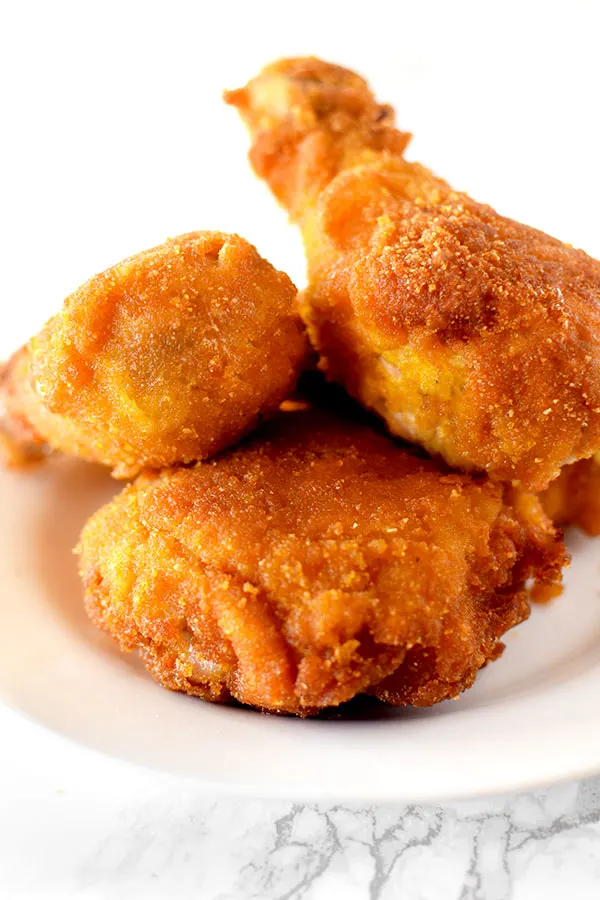
Fried chicken is one of my favorite foods.
I love everything about it: from the crispy flavorful crust, to the juicy and tender chicken inside.
The only thing better than classic fried chicken is this fried cornflake chicken.
Not only is it easier to make - since it only requires a few ingredients - it is also at least as flavorful.
Now I’m not saying you should give up your fried chicken for cornflake chicken… however I do think you should definitely add it to your recipe arsenal.
One of my favorite things about this recipe is that it is a waste not want not recipe.
You can use a fresh box if you want to but it works just as well with a box of old stale cornflakes.
That’s actually how my family started making it.
Not only did we have stale cornflakes but we had boxes in the pantry that were being ignored.
Now cornflakes have made it back on the shopping list just because we make this chicken regularly.
Now, as you can see in the photo, this recipe doesn’t use full or even broken up cornflakes.
After a lot of experimenting, I found that powdered cornflakes give the best crust that rarely falls off. Second to best are small pieces of cornflakes.
Larger pieces just refuse to stick when fried.
You can bake them if you want to, but it isn’t nearly as flavorful.
Can Frosted Flakes be used?
Yes. This recipe works with Frosted Flakes as well. The chicken will be a little sweet but not overly sweet. However, because my family gave mixed reviews, I only do this when I have Frosted Flakes that have gone stale.
Can this chicken be baked instead of fried?
Yes, but the flavor won't be the same. Bake at 350°F for 45 to 60 minutes or until the chicken is crisp and golden.
DARK MEAT VS WHITE MEAT
Most people have a preference between eating white meat or dark meat. They both certainly have their benefits and detriments in this recipe.
White meat has the benefit of being lean, more readily available as boneless and skinless, and it cooks quickly.
Dark meat is juicier and does not dry out as quickly, making it a safer choice.
At the end of the day, you can use either white or dark meat for this recipe. The choice is yours. I often just choose based on what I have on hand.
GLUTEN FREE OPTION
For a gluten free alternative, use corn starch or potato starch instead of flour. They both fry very nicely.
HOW TO DREDGE CHICKEN
DOUBLE HANDED
Use one hand to dip the chicken in the egg and the other to roll it in flour.
By using both hands you avoid getting thick layers of batter on your fingers known as “club hand.”
CONTAINER TECHNIQUE
Place half the flour at the bottom of a container. Add the chicken and cover with the remaining flour.
Cover with a lid and shake for a few minutes. Each piece should come out well coated.
A WORD ON OIL
When frying chicken the temperature, of the oil is important.
If it’s too cold, the chicken will be oily. On the other hand, if the oil is too hot, the crust will fall off.
With a thermometer, it should about 350°F or 175°C to 375°F or 190°C degrees.
If you don’t have a thermometer, when the oil seems hot, drop a little flour into the oil.
If the flour sizzles and floats on the top, it’s hot enough.
To make sure it’s not too hot, keep it around medium-low and adjust as needed.
IS KOSHER CHICKEN BETTER?
Kosher animals are kept in better conditions than non-kosher animals due to strict kosher health requirements of the animals.
Also, the salting process used as part of the process of making meat kosher is similar to dry brining, and therefore produces a better quality meat.
While I’ve only eaten kosher meat so I cannot compare, I’ve been told by non-Jews who do not keep kosher that they’ve noticed that kosher chicken is of superior quality to cook with.
SHOULD YOU WASH CHICKEN?
According to the USDA, you should not wash meat or poultry, since water can splash bacteria up to 3 feet surrounding your sink.
A study done by Drexel University shows that it is best to move meat and poultry directly from package to pan. The heat from cooking will get rid of any bacteria that may be present.
HOW CAN I CLEAN MY CHICKEN WITHOUT WASHING IT?
If you want to clean your chicken without washing it, wipe it down with a wet paper towel.
Just make sure the paper towel doesn't touch anything else and to toss the paper towel right away.
HOW TO DEFROST CHICKEN
IN THE FRIDGE
Defrosting chicken in the fridge is the most highly recommended.
To do this, place the frozen chicken in a pan and let it thaw. Oftentimes, when chicken thaws, it releases liquids that can leak onto your fridge, so the pan is really helpful.
Chicken typically takes a full day to thaw. Once thawed, it can remain in the refrigerator for a day or two before cooking.
IN COLD WATER
Defrosting chicken in water should take two to three hours.
Submerge your sealed chicken in a pot or bowl full of cold water. Change out the water every 30 minutes or so.
Do not hot use water because it can start cooking your chicken.
Can you cook FROZEN chicken?
According to the USDA, you can cook frozen chicken. It will take 50% longer to cook, but it’s an option.
You should also cook it on a roasting rack or over vegetables so that the heat can circulate around the chicken.
CAN YOU REFREEZE RAW CHICKEN?
According to the USDA, “food thawed in the refrigerator is safe to refreeze without cooking.” However, you do lose quality when refreezing previously defrosted meat.
Every time you defrost meat, it loses moisture as it thaws, which also leads to a loss in flavor. To compensate for this, marinate the chicken to add more flavor and juice.
The USDA also says not to “refreeze any foods left outside the refrigerator longer than 2 hours; 1 hour in temperatures above 90°F.”
SHOULD YOU BRINE?
Brining actually doesn’t do anything to help poultry. In fact, it makes it soggy rather than juicy, with watered-down flavor.
Aromatic brines and stock don’t help with flavor either. This is because the salt pulls water molecules in, leaving most of the flavor behind.
DRY BRINING
A dry brine, on the other hand, loosens up muscle fibers, allowing them to retain more moisture without adding any excess liquid.
Initially, the salt draws moisture out, then it dissolves in this liquid, creating a concentrated brine, which eventually gets reabsorbed. This leads to more intensely flavored results.
An added benefit is that it also requires less space and mess than a water brine. Not to mention the fact that it allows for crispier skin.
CAN YOU DRY BRINE KOSHER chicken?
Food experts are often under the impression that kosher meat and poultry cannot be brined and dry brined.
This is because of the koshering process, which involves salting the meat. However, the process is not nearly as long as the dry brining process, and unlike a dry brine, the poultry is soaked to remove the salt.
So, since the process is different than a dry brine, it is fine and even recommended to dry brine kosher poultry and meat.
How do you dry brine chicken?
Begin by patting the chicken with paper towels. This will help the salt adhere to the chicken.
Grab pinches of kosher salt and sprinkle it over the chicken until the chicken is generously salted and evenly coated.
Place the dry-brined chicken on a rack or a plate and refrigerate it. Refrigerate chicken pieces for at least 1 hour, skinless pieces for 30 minutes to 1 hour or up to about 12 hours, and a whole chicken for 8-24 hours.
Once the waiting period is up, there is no need to rinse off the chicken. Just cook it as usual.
HOW TO STORE CHICKEN
Place cooled chicken in an airtight container or wrap in heavy-duty aluminum foil or plastic wrap. Store in the fridge for up to 4 days.
HOW TO FREEZE CHICKEN
Freeze leftovers within 3-4 days. Place cooled chicken in an airtight container or resealable freezer bag.
Freeze for up to 4-6 months. After that, it is still safe to eat, but the quality begins to degrade.
How to reheat
For the best results, heat in the oven or easy fryer. The fryer gives the best results, but it's also more likely to break the crust exterior.
Cornflake Fried Chicken

This cornflake chicken is juicy and packed with extra flavor, due it being fried instead of baked.
Ingredients
- 5 cups cornflakes (140 grams)
- 2 eggs, lightly beaten
- 4 leg quarters cut in two
- Oil for frying
Instructions
- Using a food processor, turn the cornflakes into a powder. Pour it into a mixing bowl.
- Heat the oil. You know it’s ready when you drop some powder in and it floats and fries instead of sinking. Turn down to a medium-low flame.
- Dredge a piece of chicken in the powder. Shake off the excess.
- Dip the piece in a second bowl with egg to coat. Let any excess drip off.
- Re-dredge the piece in the powder and place in the frying pan.
- Repeat this process until your frying pan is full but not crowded.
- Fry until golden brown. Flip and fry until golden brown on the second side.
- Remove the pieces and set aside on a cooling rack and repeat with the remaining pieces.
Notes
If you cut into the chicken and find it a little pinker than you’d like, don’t put it back in the frying pan. Instead, bake it in a preheated oven for 5 or 10 more minutes.
Recommended Products
Some of the links below are affiliate links, which means that if you choose to make a purchase, I will earn a small commission. This commission comes at no additional cost to you.
Nutrition Information:
Yield:
8Serving Size:
1Amount Per Serving: Calories: 512Total Fat: 25gSaturated Fat: 7gTrans Fat: 0gUnsaturated Fat: 16gCholesterol: 276mgSodium: 333mgCarbohydrates: 15gFiber: 1gSugar: 2gProtein: 54g

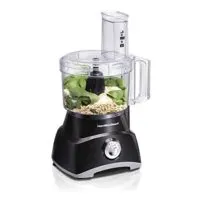
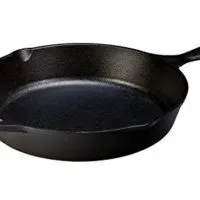
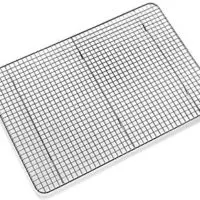

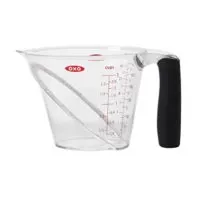
Naomi
Friday 22nd of March 2019
Can this recipe be baked instead of fried.? I am trying to sty way from fried foods.
ElissaBeth
Friday 22nd of March 2019
Yeah it should bake just fine!